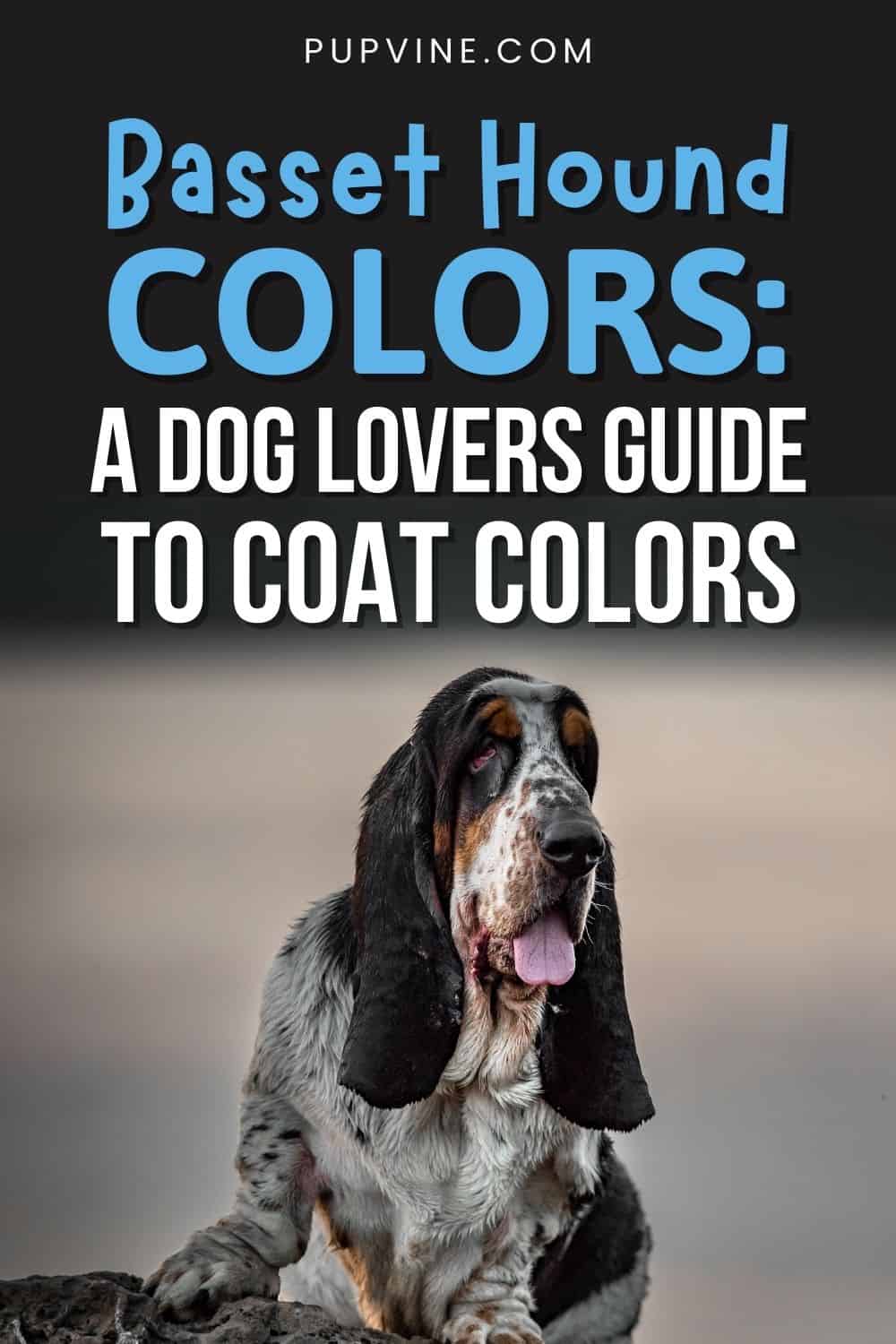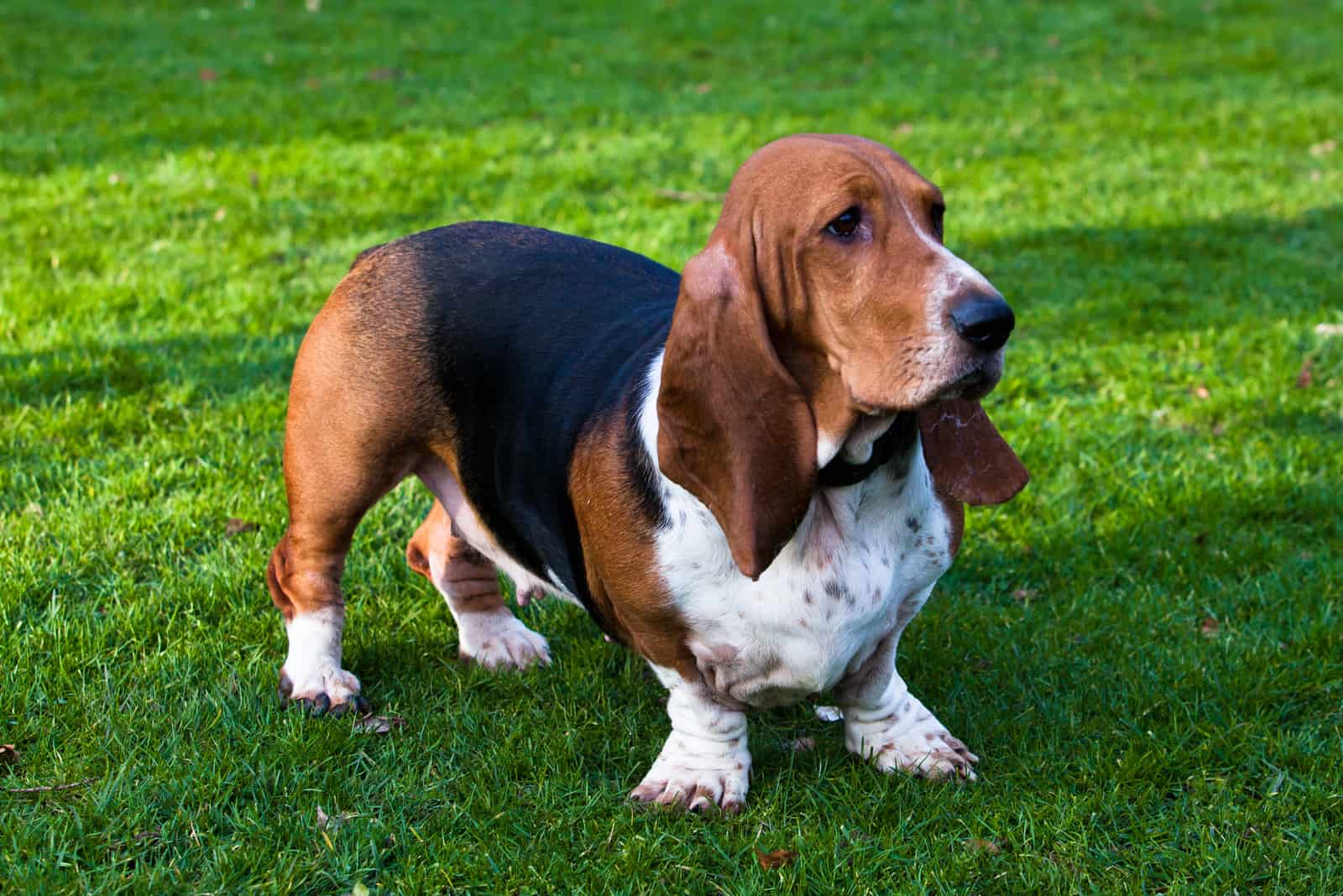The Basset Hound: a droopy-eared, sad-eyed, short-legged pooch that never fails to win hearts and raise smiles wherever it goes, with a comical lope and a tail that never stops wagging.
Chances are, the ones you’ve seen look pretty much the same, with the classic black, white, and tan tricolor coat. But did you know they come in other colors and a range of different markings too?
We’re going to do a deep dive into the world of Basset Hound colors, and while we’re about it, we’ll explore these amazing dogs in more detail.
So, without further ado, we’ll jump right in!
The Basset Hound Breed
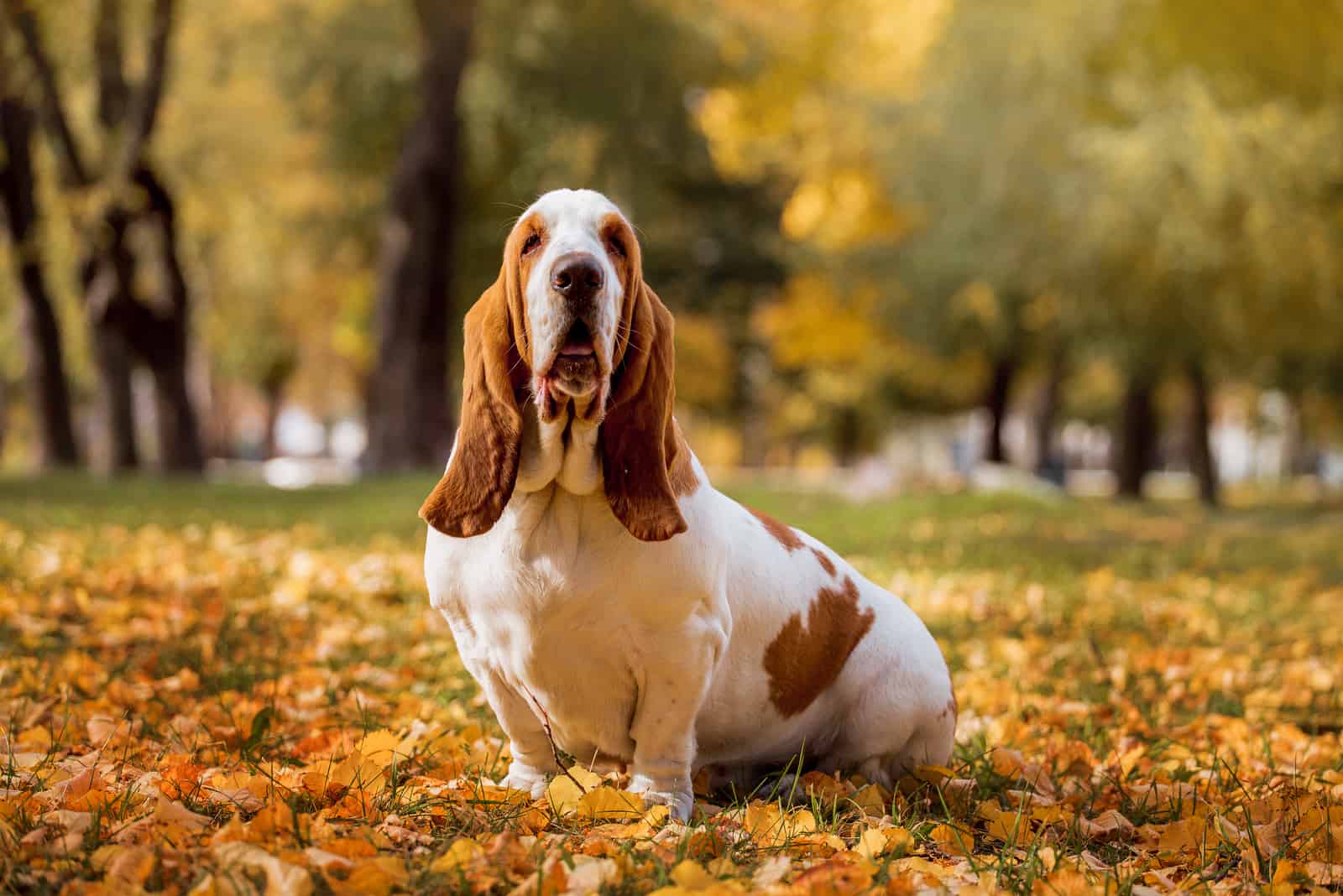
Let’s start with a bit of background information about Bassets to give us a better understanding of what these droopy dogs are all about.
First, the name Basset. Imagine you’ve been transported back to 6th century France. Imagine, too, that you’re a member of the French aristocracy or upper classes, which means you’ll be spending a lot of time hunting deer, boar, hare – game of all shapes and sizes. Although most will be eaten, the main reason was for sport.
You’ll need scent hounds to help you track and flush out prey. To help follow the trail, some dogs are bred to have short legs so that their noses are close to the ground. Skip forward to the year 1000 CE, and all hunting dogs under 16 inches are called basset (pronounced bassay) from the French word bas, meaning low.
One of the main players in the world of hunting dogs in the 6th century was St. Hubert, who ran a Benedictine abbey in Belgium, and these dogs soon became known as the St. Hubert Hound.
The English aristocracy liked the look of the dogs their French neighbors were using, and so these dogs made their way to England. There they were developed and refined through breeding programs until the dog we know as the Basset Hound emerged.
These dogs were built for stamina, tracking their prey over many miles without tiring, making them useful for people hunting on foot rather than horseback. They still retain this quality today, even though their days as hunting dogs are mostly a long-distant memory. Today, the vast majority of Basset Hounds are kept as pets and companions. They’ve also kept their amazing sense of smell and are considered to be second only to the legendary bloodhound when it comes to following a scent!
On the subject of scents, they have one of their own. This is due to their naturally oily skin that keeps their short coat waterproof. It can become a little pungent at times but can be managed through a diet of good quality dog food and frequent bathing, though it’s vital not to try to eliminate the oils completely as their skin will dry out and become itchy and irritated.
Aside from their smell, they are known for their drooling. This is because of the saggy folds of skin around their mouths that never dry out, allowing yeast infections to form. For these reasons, Basset Hounds aren’t for everyone, but if you can see past these minor issues, they make amazing family pets! They are gentle, friendly, and playful, and very tolerant of young children and other dogs.
Now that we know a little more about them, we’ll examine their coat colors.
Is Coat Color Important?
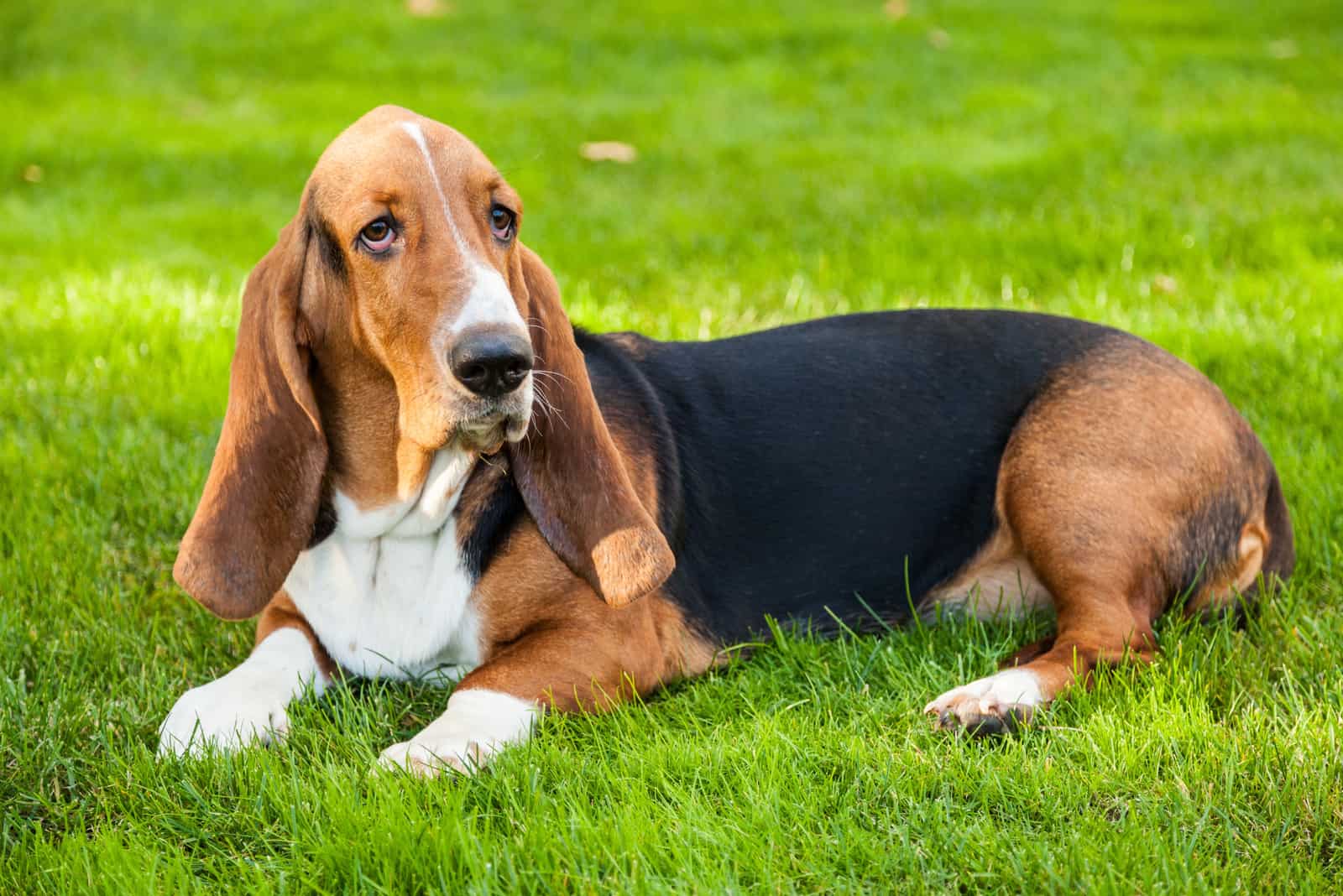
For many people, the actual color doesn’t matter – they just want a doggie companion!
However, if you want a particular color, it is important because it matters to you personally.
More importantly, organizations such as the American Kennel Club (AKC) and the Basset Hound Club of America only recognize certain Basset Hound colors as part of the breed standards. Why do they do this? Is it because they don’t like the look of the others? Is it some shortsighted rule to keep the breed looking just the way they want it out of pure snobbery?
Believe it or not, these rules have nothing to do with disdain or elitism. The fact is, some of these colors are caused by genes that can adversely affect the dog’s health. By setting breed standards that discourage particular colors, these organizations hope to improve the health of the breed overall.
Serious breed enthusiasts who enter their Bassets in dog shows regard coat color as paramount, as the ‘wrong kind’ of color or markings will affect the dog’s score in the arena.
We’ll take a closer look at the genetics of Basset Hound colors in our next section.
AKC Basset Hound Colors
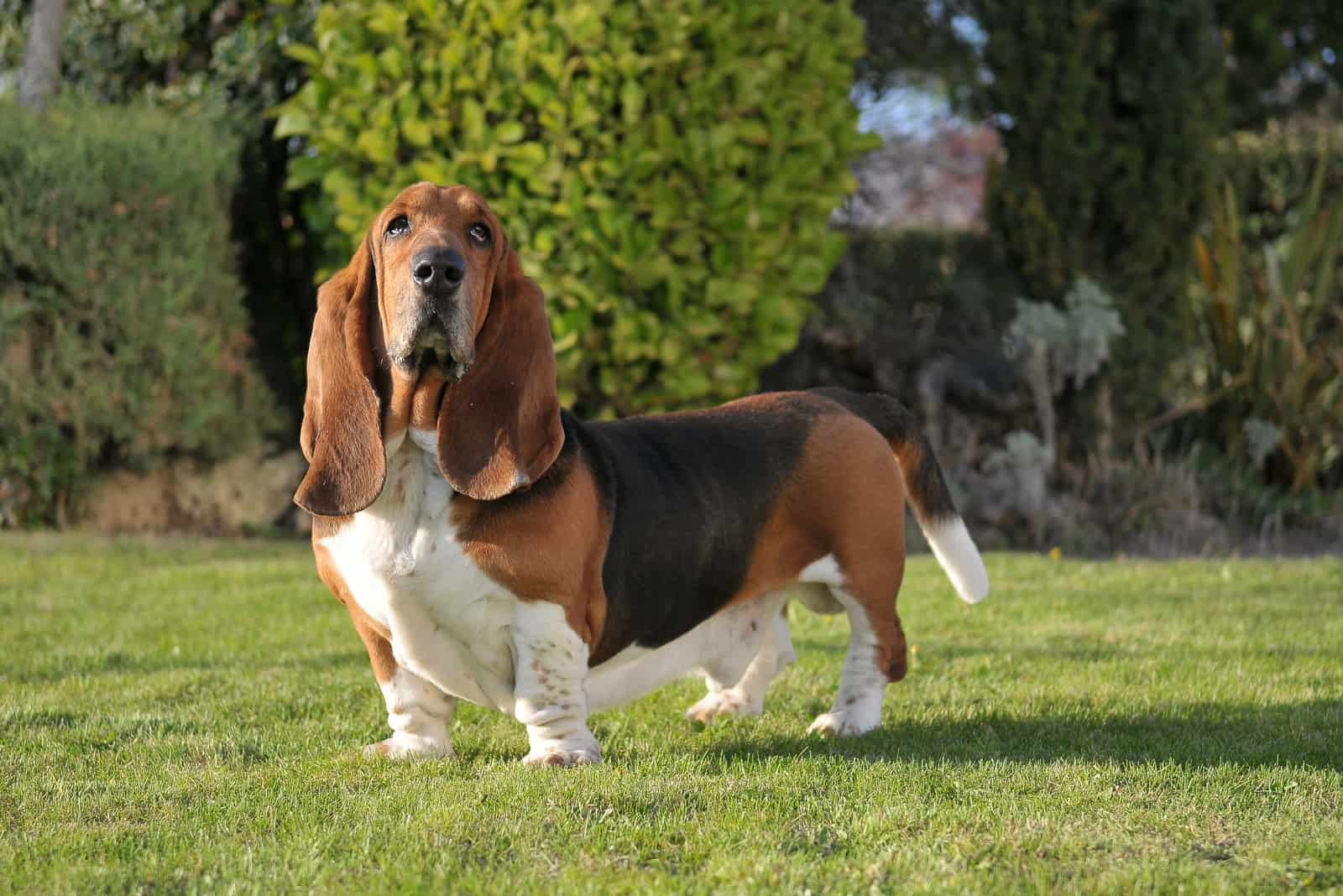
The American Kennel Club breed standards state that “Any recognized hound color is acceptable, and the distribution of color and markings is of no importance.”
Note the word ‘recognized‘ slotted in there? This subtle inclusion means that the color has to be on their list. Admittedly, it’s a fairly long list, but there are still exceptions!
For example, a Basset Hound with a coat of one single ‘solid’ color and no markings is not listed within the accepted colors and therefore is not recognized. The AKC states that solid color Basset
Hounds are not purebred, which is why the color is not acceptable.
Pure Blue Basset Hounds are also unacceptable, and you can see the reasons for this in the section further along in this article.
Tricolor and bicolor coats are most common, and all color combinations of these are recognized.
Basset Hound Color Chart
The American Kennel Club takes its colors seriously, giving each color, combination, and set of markings a specific reference number, as you can see from the following chart:
[table id=151 /]
[table id=152 /]
Basset Hound Color Genetics
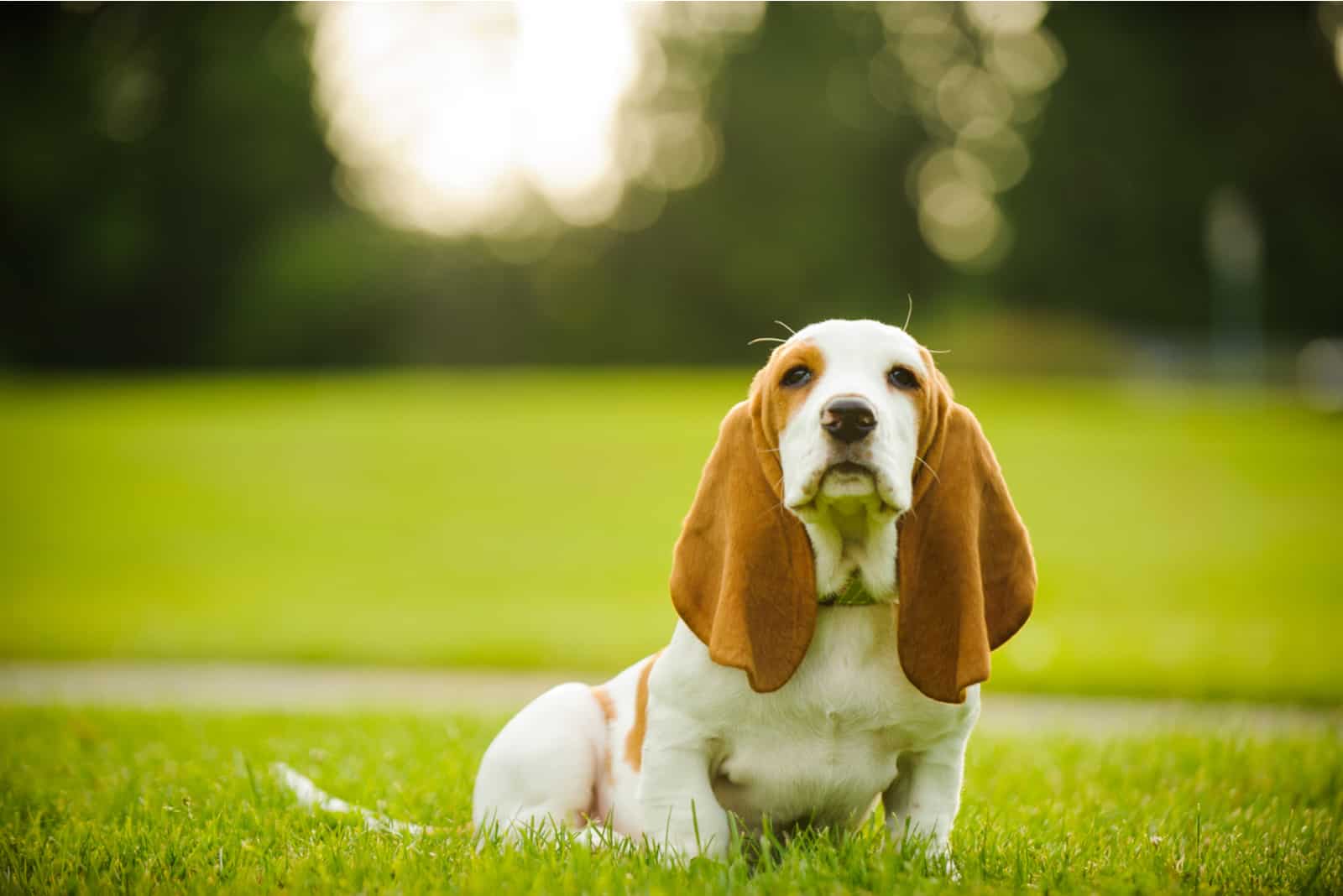
Don’t worry, we won’t get too technical! Genetics is a seriously complicated subject that many dog experts and breeders don’t even fully understand at times.
This section is a basic guide to give you an idea of how and why dogs turn out different colors.
A dog’s coat color is created by two pigments: eumelanin and pheomelanin.
Both of these have default colors that can be modified by different genes to alter the shade, pattern, and markings.
Eumelanin’s default color is black, so any black on your dog is caused by cells producing this pigment. When certain genes are present, they inhibit the cells’ ability to produce eumelanin, effectively diluting the black to shades of brown or gray, usually referred to as liver, blue, or isabella.
To put it simply, blue is diluted black, and isabella is diluted liver (although technically, it’s not diluted as such, just a change in the structure that alters the pigment shade).
This applies equally to the dog’s eyes and nose, which will always be black unless affected by certain genes to produce amber or gold eyes.
Pheomelanin, on the other hand, is a red pigment that affects the coat only, not the eyes or nose or anywhere else. Even though it is classed as red, the default color is more of a golden hue. The shade is changed by different genes that either increase or decrease the intensity, creating the deep, vibrant red coat you see in dogs such as the Irish Red Setter or the pale gold coat of the Golden Retriever.
The A locus gene (known as the agouti gene) in dogs mostly controls how eumelanin and pheomelanin are mixed in the coat.
What about white dogs? Well, there are two possible reasons for white coats or white markings. White is not actually a color in itself but rather a lack of pigment. It is caused when neither eumelanin nor pheomelanin is present, and the cells can’t produce any pigment to color the hairs. In extreme cases, the animal is an albino, as the eyes appear red because no pigment is present.
The other type of white coat is produced by a drastic dilution of the pheomelanin (red) pigment. This can be so diluted that it appears as a white, ivory, or cream color.
The color genes determine the color, shade, and distribution of these two pigments. Sometimes they instruct cells to switch from one to the other! This causes banding on the hair, resulting in different shades of either red or black.
The genes responsible are:
• A locus (agouti)
• B locus (brown)
• D locus (dilute)
• E locus (extension)
• H locus (harlequin)
• M locus (merle)
• K locus (dominant black)
• S locus (spotting)
Some of these are self-explanatory, whereas others are a little too complex to go into here. But we will mention the E locus, which is responsible for (among other things) the black mask that some dogs have on their muzzles.
These are the basic facts regarding Basset Hound colors. We could go further and talk about alleles, genotypes, phenotypes, and DNA, but this might become confusing. It’s something you can always explore in more detail by yourself if you so desire, but for now, we’ll stick with what we’ve learned so far.
Can Basset Hounds Have Blue Eyes?
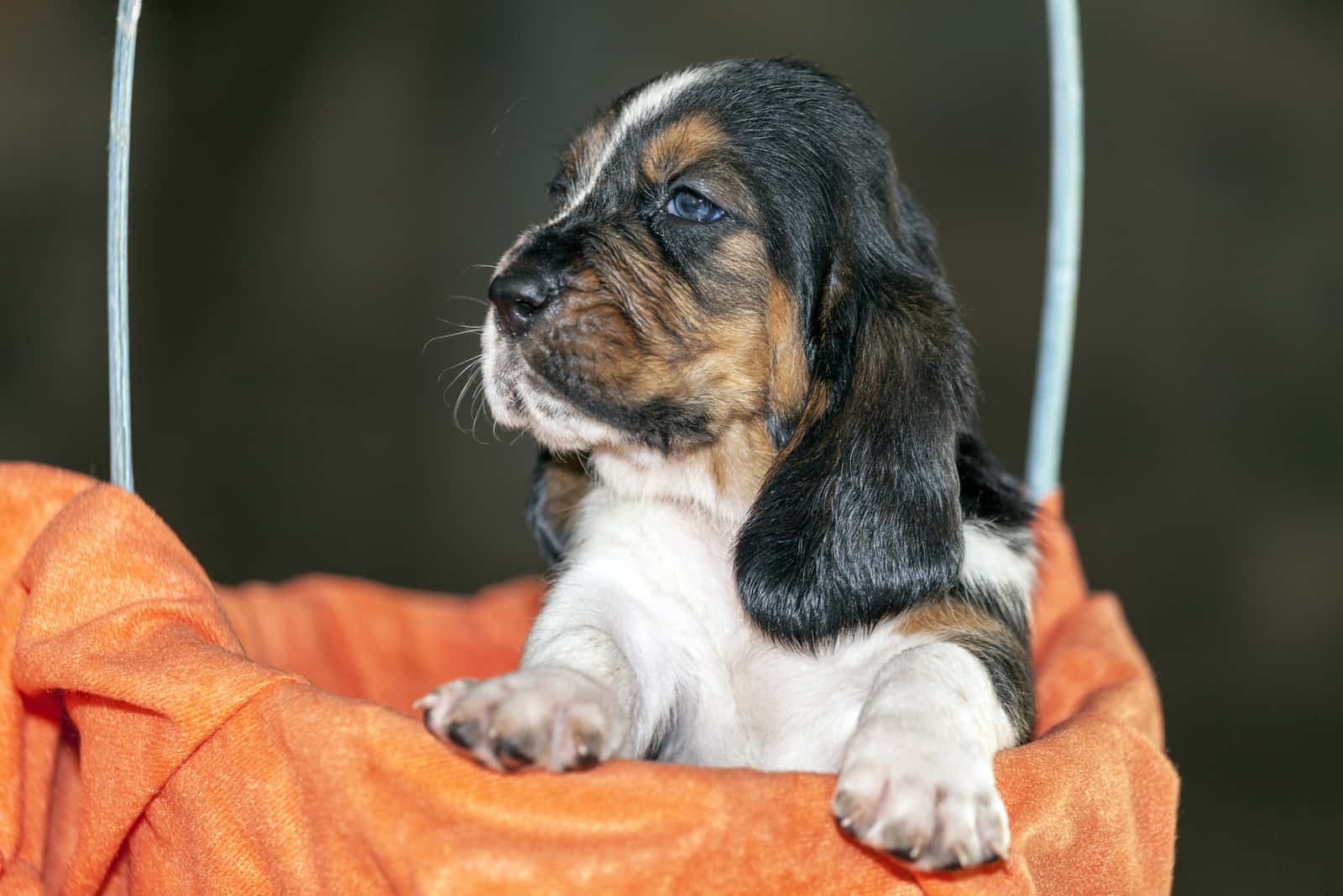
Yes, Basset Hounds sometimes have blue eyes! In fact, all puppies, whatever the dog breed, are born with bluish eyes before the pigment called melanin starts to change to a hazel or dark brown color.
However, if the parents have blue eyes, then there’s a good chance that the pup’s eyes will stay blue or a much lighter color than normal.
In the first one or two weeks after birth, a puppy’s eyes will stay closed. Between three and four weeks, those tiny eyelids open, revealing the blue eyes beneath. They will slowly start to see things more clearly as time passes, and between nine and twelve weeks after birth, their true eye color will be apparent.
Blue eyes are common in some breeds, such as the Husky, but are quite rare in the Basset Hound dog. As such, it is regarded as a serious fault by the AKC and other kennel clubs, and Bassets with blue eyes are banned from the show ring.
A quick search online proves that opinions are divided as to blue-eyed Bassets. It isn’t a simple matter of liking or disliking the color. Many Basset enthusiasts insist that the gene that causes blue eyes is responsible for inherited health conditions.
Others claim that blue eyes have no adverse effects on the dog’s health whatsoever, except in cases where two dogs with a merle patterned coat are mated, which can result in double merle dogs. The merle pattern has been linked with severe health conditions such as deafness and blindness, and double merle dogs have a high risk of being completely deaf and blind.
All of this makes it a good time to move onto our next subject…
Basset Hound Health Issues
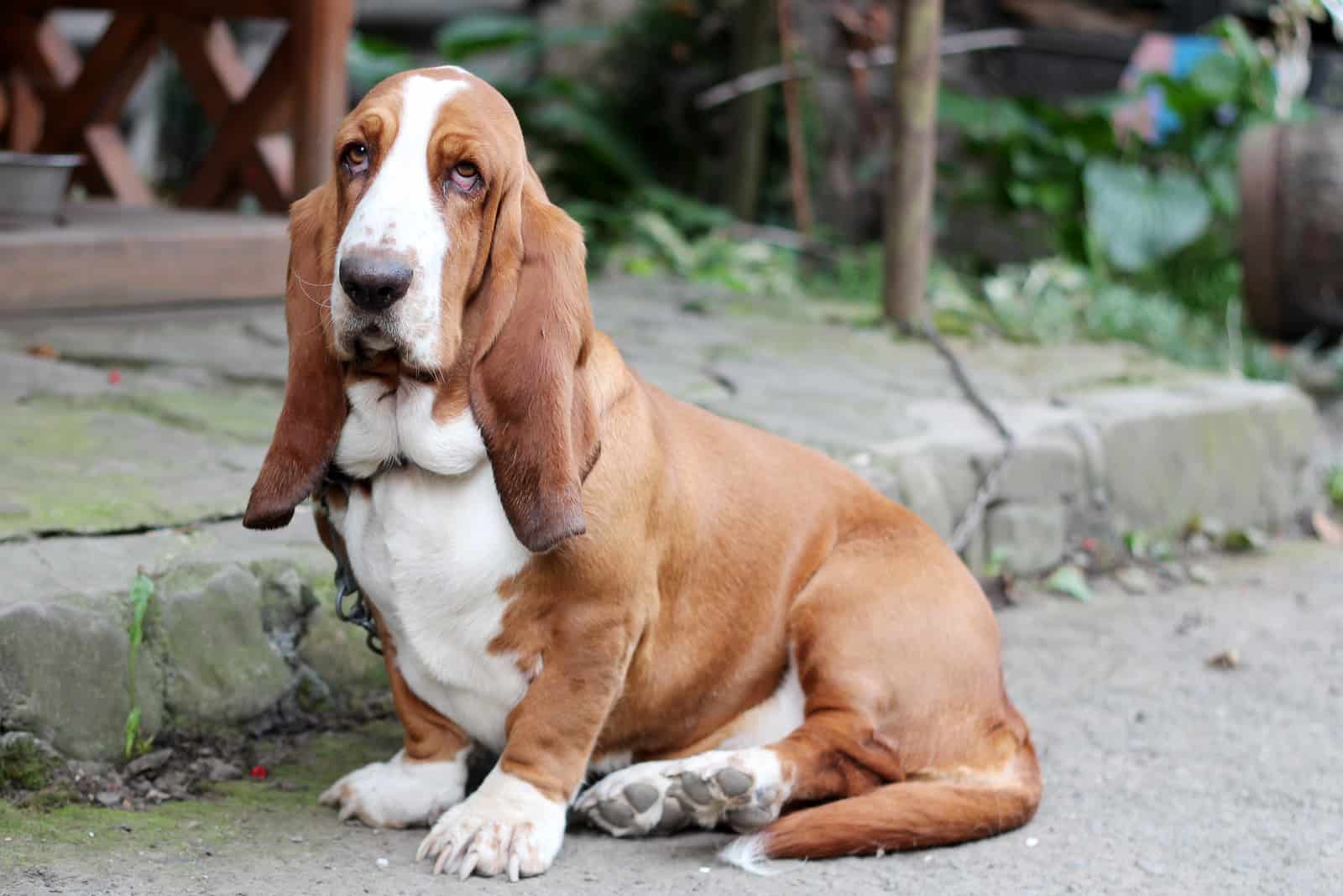
Not really anything to do with Basset Hound colors, but if you’re looking into this subject, then there’s a fair chance that you’ve got one of these Hush Puppies, or you’re thinking of getting one! It’s always good to be prepared, so we’ve included this section to keep you informed as to what to expect in terms of your dog’s health.
As with all purebred dogs, Basset Hounds have their share of health problems, mostly related to their distinctive shape and centuries of selective breeding.
This is a list of the most common health conditions they might experience:
• Hip dysplasia – a malformed hip joint that causes the bones to grind against each other.
• Glaucoma – namely, primary open-angle glaucoma, a painful buildup of fluid in the eye that can lead to blindness.
• Patellar luxation – the kneecap (patella) slips out of place, making it painful for the dog to walk.
• Epilepsy – seizures are fairly common in many breeds, and the cause is often unknown.
• Ear infections – those long ears don’t allow much air to circulate, leading to a buildup of gunk and dirt. The warm, moist environment is a perfect place for bacteria to thrive!
• Eye infections – dirt and bacteria build up in the drooping eyelids, causing infections.
• Yeast infections – these appear in skin folds, especially around the mouth where the dog drools.
• Obesity – excess weight can cause many other health problems, putting pressure on the heart, internal organs, and joints, as well as increasing the risk of certain cancers.
• Elbow dysplasia – a painful condition affecting the elbow joint due to malformation.
• Gastric dilatation-volvulus (GDV) – also known as bloat, is a potentially fatal condition where the stomach inflates and starts to twist on itself.
• Slipped disc – the Basset Hound is an achondroplastic breed (like Dachshunds), meaning that they possess the gene responsible for dwarfism. This is what gives them short legs and a long body, but this puts extra strain on the spine, sometimes leading to slipped discs.
Most of these conditions can be limited, treated, managed, or even avoided by taking proper care of your dog. Infections can be minimized by checking and cleaning their ears, eyes, and skin folds.
For the others, a regular check-up at the vet will go a long way to reducing the risk of catching the condition early enough to resolve it quickly, undergo surgery (for joint problems), or begin long-term treatment in the case of epilepsy.
With the right care, your Basset Hound will enjoy a lifespan of 10 to 12 years, or maybe longer.
Now we’ve got that part out of the way, let’s get back to Basset Hound colors!
Basset Hound Tri Color
Probably the most recognizable Basset color of all, this is the classic tan/brown, white, and black coat most of us think of. It’s a color associated with most ‘hounds,’ including the Beagle, a breed of dog very similar to the Basset Hound in many ways.
Most tricolor Bassets will change color (see the section below), and there’s no way of telling just how much of the black will turn to brown, especially on the ears and top of the legs. In fact, tricolor Bassets change the most out of all Basset Hound colors. This change will be apparent within 1 to 3 weeks after the pups are born and could take up to 2 years until they finally settle to a permanent color.
Puppies that look mostly black and white, with a little tan on the ears, will most probably lighten to a tricolor coat. Some will also develop ticking (random spots of dark color) on their coats as they mature.
Basset Hound Colors Lemon & White
Lemon is used to describe a sort of blond-colored fur. This will usually be accompanied by white, with no trace of black hairs anywhere and is the result of a recessive gene that dilutes the coat colors.
These colors will start to fade at around 8 weeks old and will soon darken to a tan color. Lemon Basset Hounds will have no black hairs anywhere. Remember our old friend, eumelanin? Lemon Bassets lack this pigment, which probably accounts for the lightness of their coat. However, as we hinted above, experts don’t really understand the genetics behind this coat color.
Are Lemon Basset Hounds Rare?
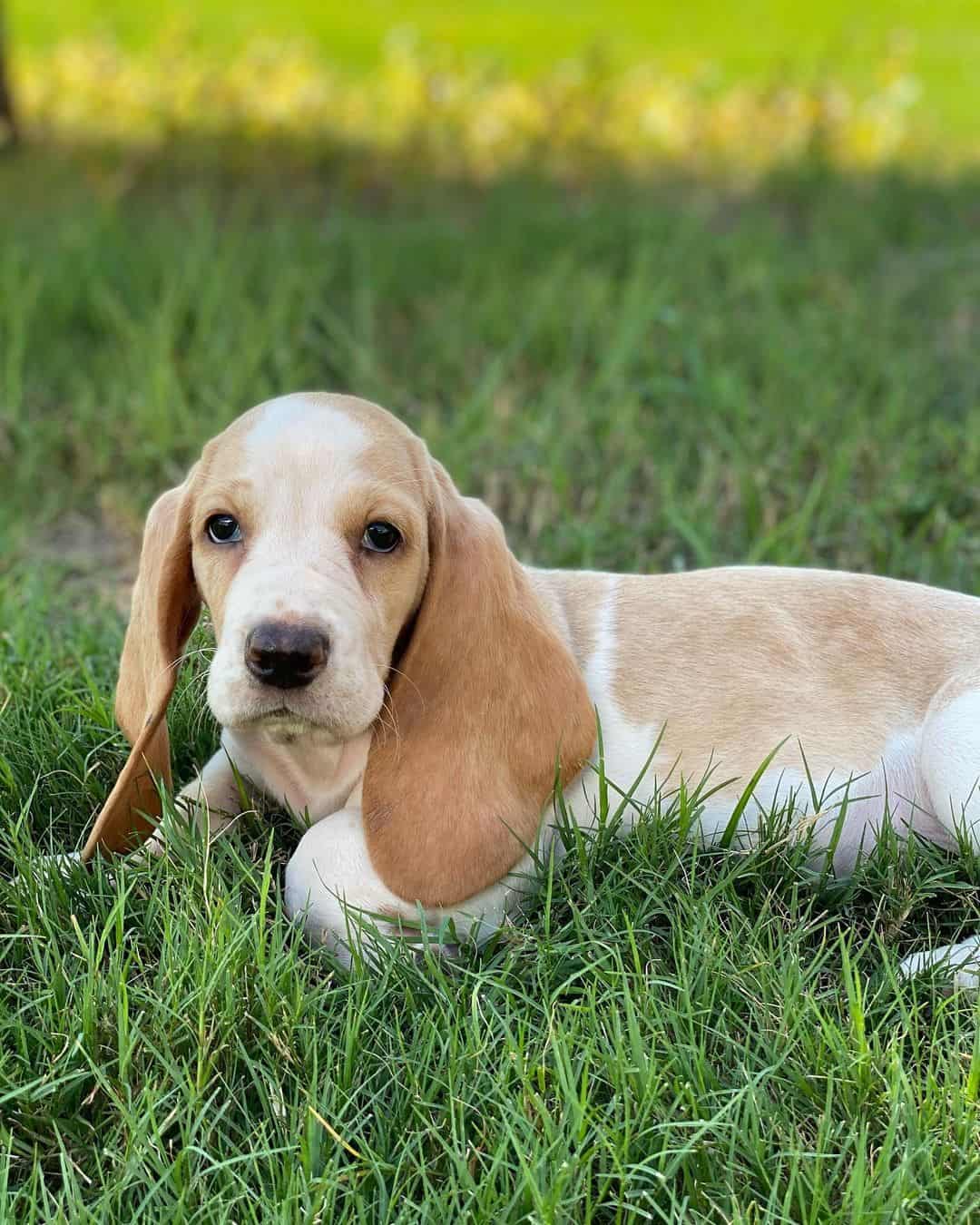
Photo from: @deezbassets
Yes, of all the Basset Hound colors, pure lemon color is among the rarest, along with solid black. It’s easy to mistake a white pup for a lemon one, but these will generally change to a light tan color within a few weeks.
A true lemon Basset Hound is very rare to see. As pups, they’ll start as completely white Basset hounds with no sign of tan anywhere on their bodies.
Remember, the AKC doesn’t accept solid colors, so a pure lemon Basset Hound would be unacceptable. However, lemon and white dogs are fine!
Blue Basset Hounds
Once again, blue is only accepted by the AKC as an extra tone to the coat, never as a pure, solid color. However, other kennel clubs worldwide do recognize blue Basset Hounds, often listing them as a separate breed known as the Blue Gascony Basset.
Either way, pure blue Basset Hounds are very rare.
If you take a look at Basset Hound forums, you’ll come across some heated discussions about blue Bassets. Those in favor insist that they are as healthy as any other Basset, whereas those against will insist that breeders are irresponsible to continue using blues as they raise the risk of severe genetic defects resulting in conditions such as periscoping intestines. They also say that there’s an increased chance of the dog suffering from skin or food allergies and alopecia.
It’s a debate that will no doubt continue, with both sides claiming to have the breed’s welfare in mind.
Basset Hound Colors Red & White
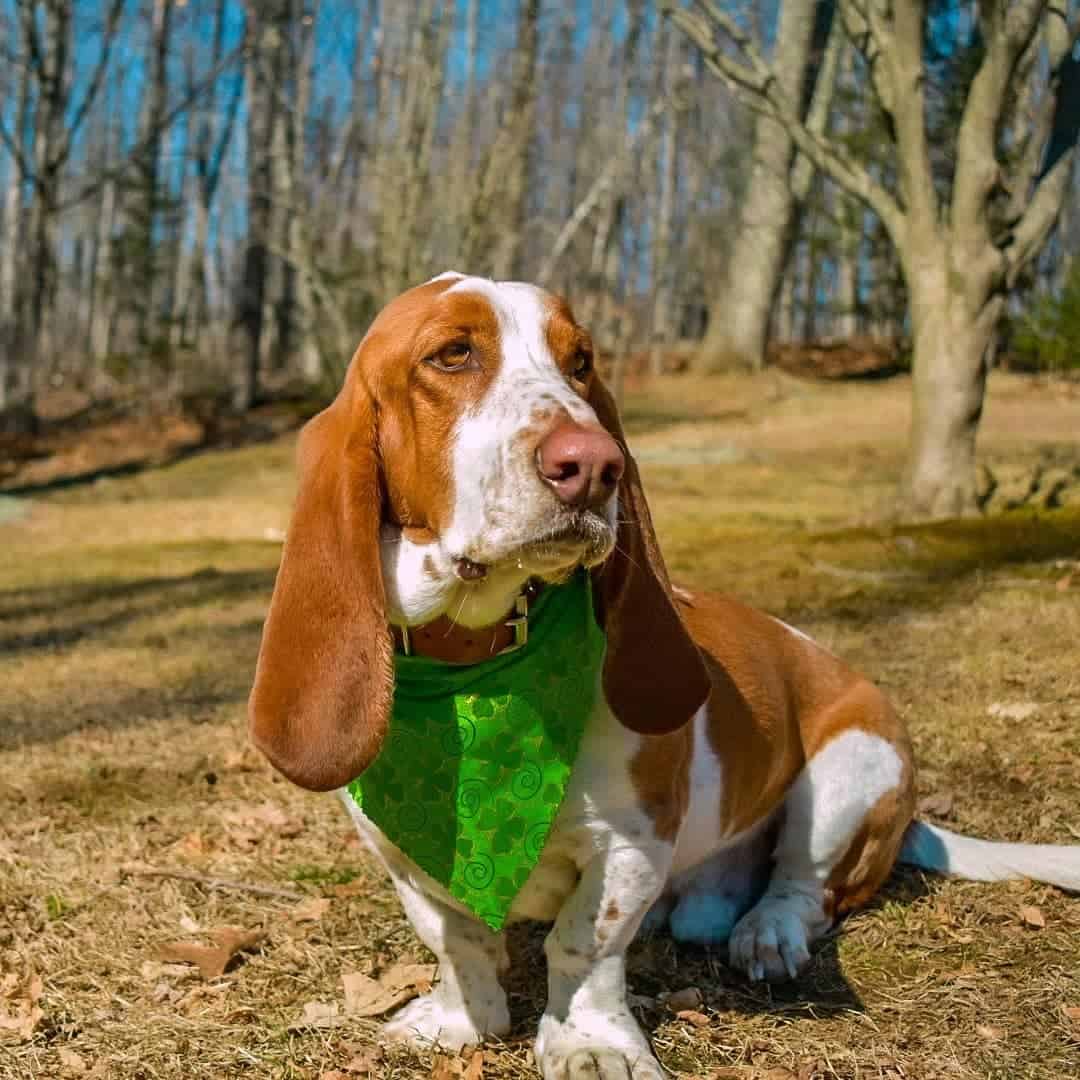
Photo from: @oliverpuckchron
A red and white dog? Sounds unlikely, doesn’t it? As we’ve already discovered, breeders and kennel clubs are a little fanciful with their color descriptions! In reality, red covers a wide range of browns.
In the section on genetics, we learned that the color red is produced by the pheomelanin pigment, and the shade and distribution are determined by the genes. Red and white pups will start to change color by week 7, often becoming much darker.
Because of the lack of eumelanin, they will probably have light-colored eyes.
Basset Hound Colors Black & White
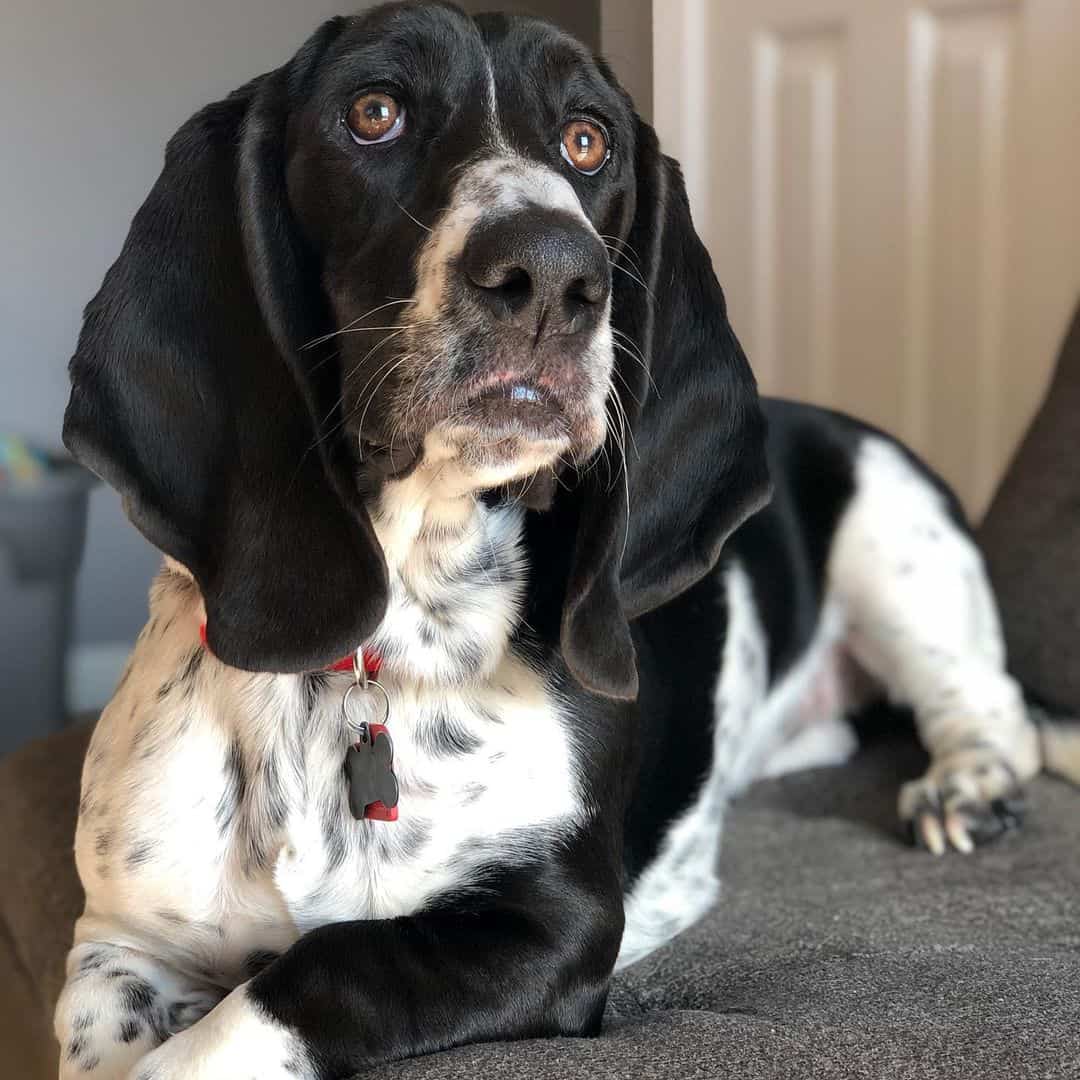
Photo from: @rubylouthebassethound
Black and white Basset Hounds are notoriously difficult for breeders to produce, as there is usually some brown or tan present, often around the eyes. Also, puppies that start out black and white will often develop some brown markings as they mature.
Once again, this is something to remember when choosing your dog. Be wary of breeders who offer you black and white Bassets, especially those who ramp up the price, claiming that these are rare Basset Hound colors.
It isn’t impossible to have a bicolor black and white Basset, but chances are that there will be at least a small amount of brown or tan.
Basset Hound Colors Black & Brown
It is possible for a male or female Basset Hound to be completely black and brown, with no white at all. This happens when the dog’s cells don’t produce pheomelanin, resulting in a much darker colored coat.
It isn’t uncommon for the colors to fade as the dog gets older, especially with exposure to sunlight.
Bassets with no white on them whatsoever are not favored by some breed enthusiasts or hunters, as they believe that the white tip on the tail is essential. In the past, when these dogs were mostly used for hunting, the white tips and blazes were helpful in keeping track of the dogs as they crashed about through undergrowth in pursuit of prey.
Although this might still be useful if your pooch loves to go exploring, it’s hardly a necessity these days when the vast majority of people have found a more humane use for their spare time.
Basset Hound Color Change
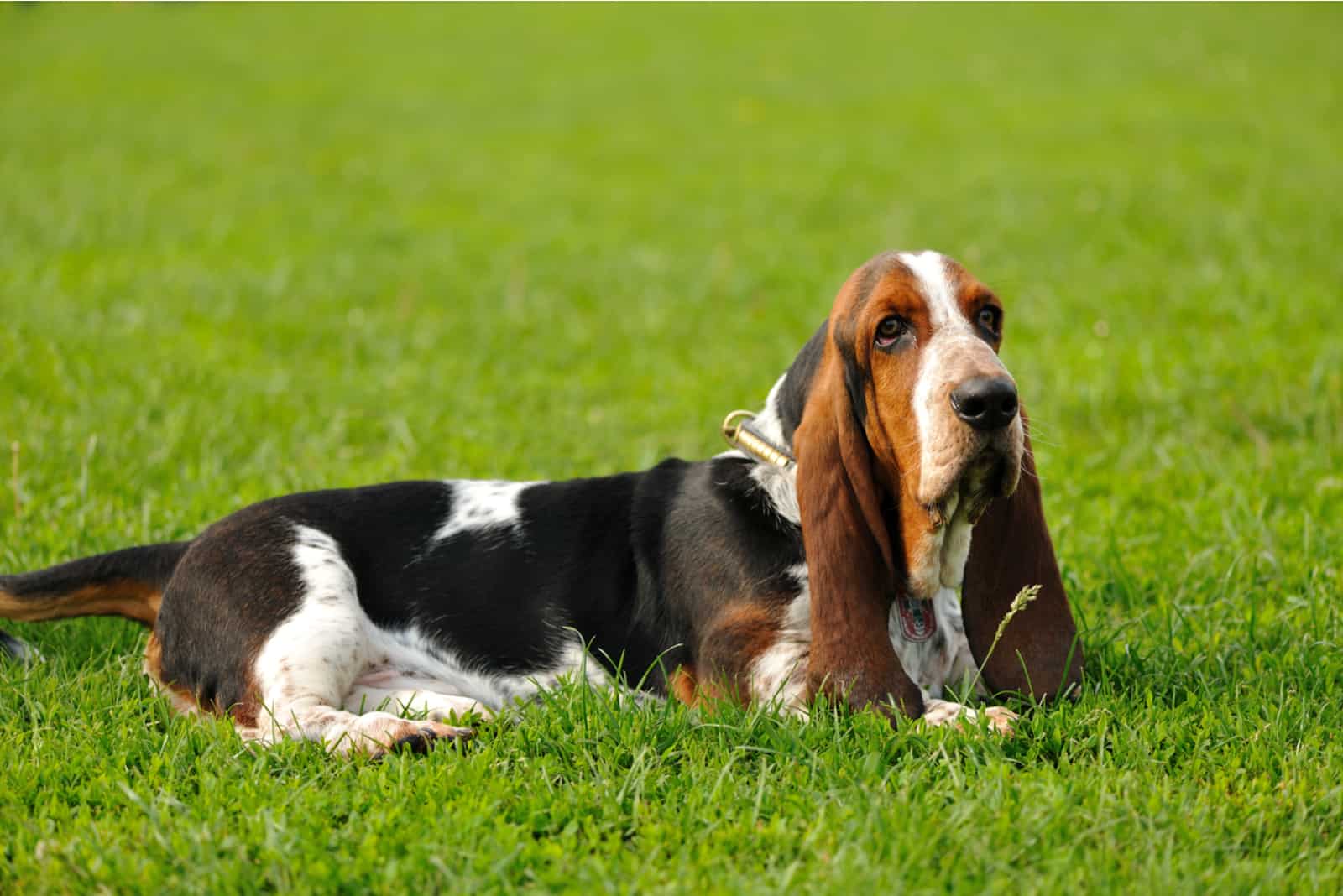
As we saw in the section about genetics, the genes that pups inherit from their parents will affect Basset Hound colors. The greater majority of Basset Hound puppies will change color as they mature, sometimes several times and quite dramatically.
If you visit a breeder with a particular color in mind and pick out a pup based on this, there’s a fair chance that you’re going to be in for a shock by the time you get them home. And when they’re settled in, you might want to take some photos. Well, that goes without saying – of course you’re going to take photos of your new family member!
Anyway, in a couple of year’s time, fish out those early photos and compare them to how your pooch looks today. In all probability, they will look totally different.
Some colors will fade, while others will get deeper (usually red), with the ears being particularly affected. This is all down to the genes we talked about earlier affecting the two pigments responsible for the colors, patterns, and markings on the coat.
What Have We Learned About Basset Hound Colors?
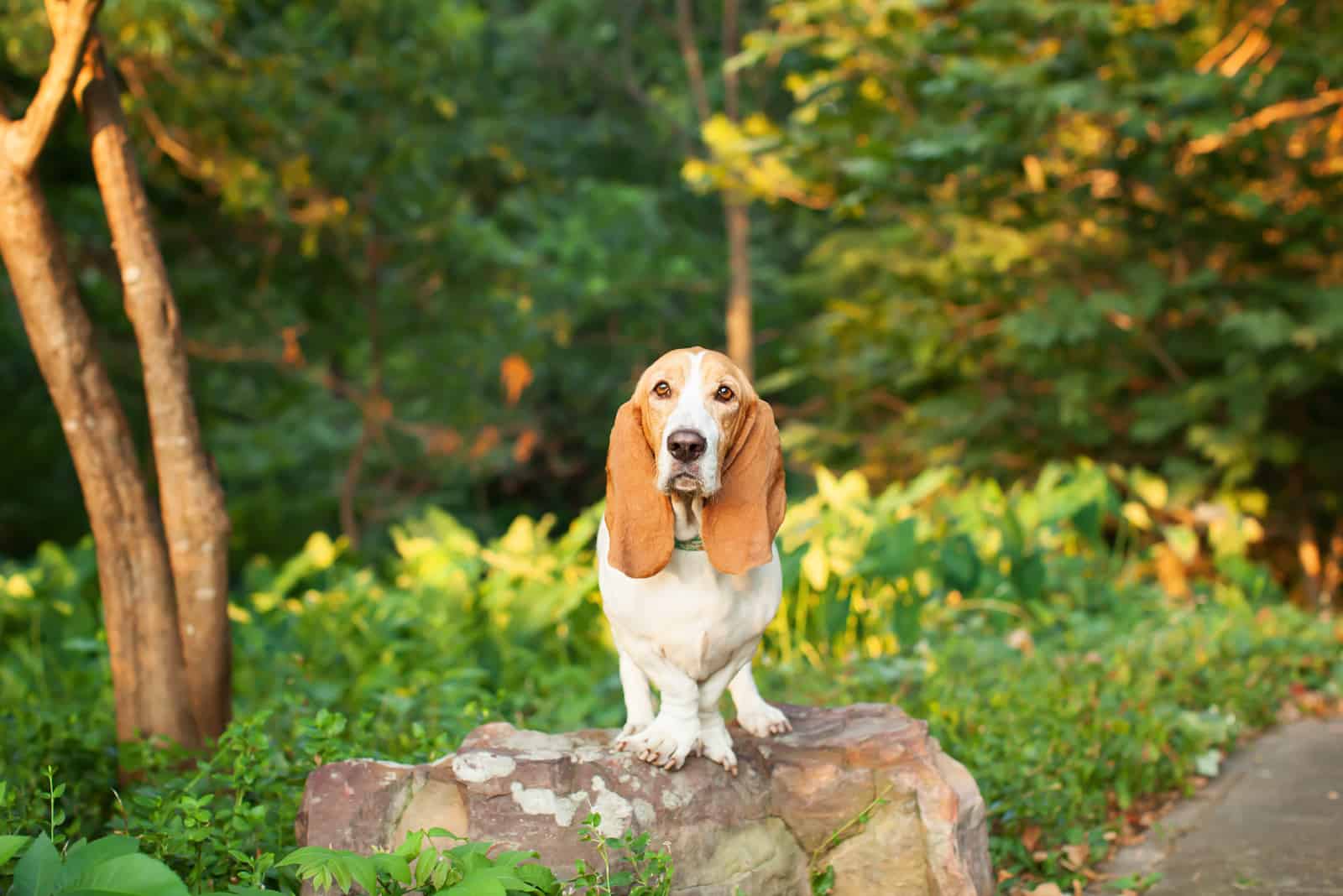
Hopefully, you’ll have a better idea by now about the Basset Hound colors, as well as having an idea about health problems they might face. We’ve looked at their history, touched on the genetics of coat colors, and mentioned some of the color combinations you might find.
We’ve learned that some kennel clubs are fussier about coat colors than others. We know that the AKC says that all colors and markings are acceptable, but that really isn’t the case as they regard solid colors as genetic faults. They particularly don’t like pure blue Bassets, apparently because of the possibility of genetic defects being passed on.
We now know that two pigments are responsible for all of these wonderful colors and that about eight different genes contribute to the amazing shades and patterns that emerge. But, regardless of the color, you can be sure that these dogs shed quite a lot.
If you are thinking of getting a Basset Hound and are fixed on a particular color, there’s just one thing you need to be sure to do: use a responsible breeder. We can’t stress this strongly enough. They will be honest and upfront about what colors they can provide, how long it might take, and what the cost is going to be. They won’t try to sell you one as a ‘rare color’ or promise that your dog will stay the same color as it grows up.
Aside from this, you can be confident that your pup will be in the best of health and will have been born and kept in comfortable, sanitary conditions. They will probably have been vaccinated and dewormed. If a breeder doesn’t offer these things as standard, you’d be best to avoid them.
Is the color of your dog important? That’s something only you can decide!
But the fact remains that your Basset will be a happy bundle of love, always ready for fun and games, whatever its color.
Read Next: Rhodesian Ridgeback Colors: All Shades Of A Lion Dog
